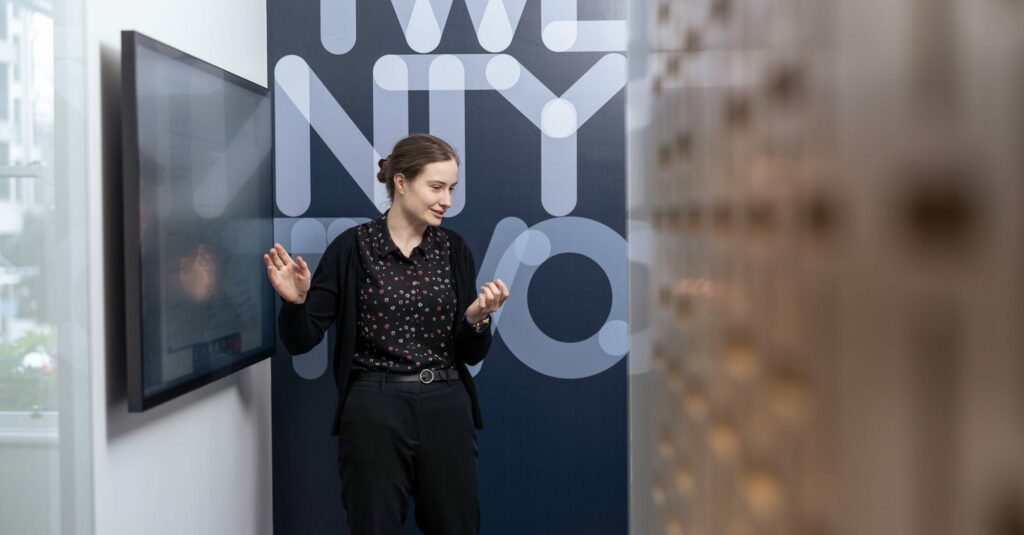In the dynamic world of modern workplaces, the value of designated spaces – meeting rooms, collaboration zones, quiet corners and phone booths – cannot be overstressed.
This familiar refrain echoes through office corridors: “Not enough meeting rooms… always booked when we need one… hindering team productivity”. While these concerns are widespread, our mission is to dispel these notions, shedding light on the intriguing disparity between perception and reality.
These spaces, pivotal for fostering collaboration and productivity, often occupy a substantial footprint within an organisation, translating into a significant project cost. So not only is it important to get it right in terms of productively, it can have significant impact on your bottom line.
Unmasking meeting room utilisation
A recent TwentyTwo survey of 300 workers, in conjunction with the installation of our Utilisation22 occupancy sensors and live data reporting, focuses on the fascinating gap between perceived and actual meeting room utilisation.
As we continue to navigate our way through these new ways of working, the lines blur between office and remote work. Employees now demand versatile facilities to seamlessly deliver their services. Meeting room utilisation emerges as a critical aspect, with our survey and data revealing a surprising misalignment between perception and reality.
Frustrations vs. under-utilisation
Over 65% of respondents expressed frustration at the inability to secure meeting rooms, resulting in impromptu gatherings in open workspaces (and disturbing others). Paradoxically, TwentyTwo’s Utilisation22 data (showing actually usage) paints a different picture – meeting rooms consistently under-used, with peaks indicating vacancies for at least 50% of the time. We also found that when meeting spaces were in use, 90% of meetings involved between one and six people – which for this organisation meant the spaces were significantly under-utilised in terms of size.
Unravelling discrepancies
While meeting rooms were booked on the system 89% of the time, the underlying issue lies in their actual usage. Recurring bookings left uncancelled, a shift to online meetings, extended booking durations and time constraints contribute to the gap between reservations and physical occupation.
Insights for improvement
To bridge this divide, organisations must delve into the root causes and implement strategic solutions:
Encouraging responsible booking
- Promote a culture of responsibility, where users cancel bookings when no longer needed
- Consider automated reminders to prompt users to reassess recurring bookings
Embracing online collaboration
- Advocate for the use of online tools for virtual meetings, especially when physical presence is not imperative
- Establish flexible booking policies to accommodate the growing trend of remote work
Optimising meeting room design
- Rethink the size and layout of meeting rooms based on real usage data
- Consider redesigning spaces to accommodate smaller groups, fostering more efficient space use
- Design spaces that support virtual and hybrid meetings with more emphasis on lighting, acoustics and technology from the outset rather than as an afterthought
Enhancing booking systems
- Improve the meeting room booking system to offer real-time availability and streamline scheduling
- Ensure transparency regarding room features to facilitate appropriate booking
The path to unlocking workplace efficiency (and potentially reducing cost) lies not only in dispelling the myths surrounding meeting room utilisation, but also in implementing strategic solutions.
By embracing responsible booking practices, leveraging online collaboration tools, optimising meeting room design and enhancing booking systems, organisations can forge a future where meeting spaces are not just booked, but utilised to their full potential creating a workspace that is both efficient and adaptable to the needs of your workforce.


